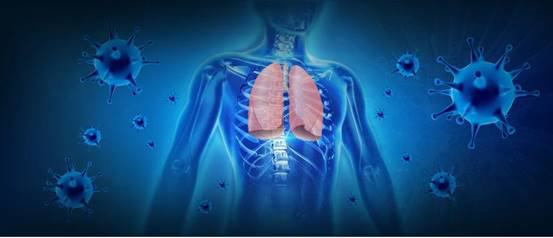
About the Novel Coronavirus: Everything You Need to Know

The World Health Organization (WHO) announced the reclassification of the COVID-19 outbreak as a global pandemic on March 11, 2020. With the rapid spread of the disease across the globe, countries worldwide have joined the war against the SARS-CoV-2 virus, for which, early prevention, control, and treatment may provide valuable tools against the pandemic. Currently, research and development of treatment is of the highest priority. In order to effectively address COVID-19 as a public health threat, we need an in-depth understanding of its infection and immune mechanisms.
As professional providers of animal models with a strong basis in social responsibility - since the outbreak, the R&D team at Cyagen has made every effort to develop animal models catered to the global SARS-CoV-2/COVID-19 research initiative, helping to accelerate progress to the research breakthrough.
1. ACE2- The Hottest Coronavirus Target
Angiotensin-converting enzyme 2 (ACE2) is known to interact with SARA-CoV as functional receptor, as well as SARS-CoV-2 and permit its initial cell entry, making it particularly important to explore its function. In addition to helping SARS-CoV-2 enter the host cell, ACE2 does play other essential roles:
2. Beyond ACE2: Additional Targets of Significance for Coronavirus ResearchAt present, the prevention and treatment of coronavirus is the most urgent issue for scientific and medical research. In addition to the ACE2 host receptor target, there are many other factors that play important roles in coronavirus invasion mechanisms.
2.1 The New Perspective for COVID-19 Research:Cytokine Storm
2.2 Beyond ACE2: Additional Targets of Significance for Coronavirus Research
| Mouse Models | The Target’s Role in Viral Infections |
|
DPP4 |
|
|
APN |
|
|
|
|
ADAM17 |
|
|
LY6E |
|
|
SIGN/CD209L |
|
|
CD147 |
|
|
DHODH |
|
In addition to above targets, if you would like to order any other models related to the research of SARS-CoV-2, corroborating materials on its feasibility should be provided. Once approved by our experts, you may be offered a promotional price for your project.
3. How to Choose the Most Suitable Coronavirus Research Models
The COVID-19 pandemic has been a clear reminder that infectious diseases caused by human pathogenic viruses are still a huge threat to global public health and economic development. Continuous efforts to study the pathogenic mechanisms of such viruses, prevent the spread of viral infections, and develop new strategies for specific vaccines and antiviral drugs have been of paramount importance to the quick progress made against SARS-COV-2 infections and COVID-19.
The application of research animal models – such as inbred mice with clear genetic background, humanized mice with cell/tissue transplantation, and genetically engineered mice - not only helps to study the pathogenic mechanism of viruses, but further clarifies the role of specific genes in the development of infectious diseases. In addition, choosing the appropriate models can provide effective, convenient, and feasible platforms for in vivo experiments, providing relevant data for the evaluation of potential targets of value in the prevention and treatment of different viral pathologies.
Comparisons of both nucleic and amino acid sequences have confirmed a high similarity between SARS-CoV-2 and SARS-CoV (approximately 80% and 76%, respectively). Additionally, SARS-CoV-2 interacts with the host through the human ACE2 receptor on the cell surface to initiate infection and causes clinical manifestations similar to SARS-CoV infection (though not exactly the same). Due to the similarities between these two viruses, the research on SARS-CoV may provide an important reference for SARS-CoV-2 research.
4. Cyagen Support for COVID-19 Research
Virus research still has a long way to go. In the war between humans and microorganisms, we ought to move forward together to understand our opponents more thoroughly. With the continuous exploration of science and technology, human civilization is destined to a brighter future.
Whether your research involves SARS-CoV-2 related gene targets or factors in other cellular processes, Cyagen can provide the relevant gene knockout, knock-in, conditional knockout, point mutation, and humanized mice models to help your research make breakthrough progress. If you would like more information about how we can support your research, please feel free to call 86 20-31601779 or email us at service-apac@cyagen.com for expert consultation at any time.
We will respond to you in 1-2 business days.